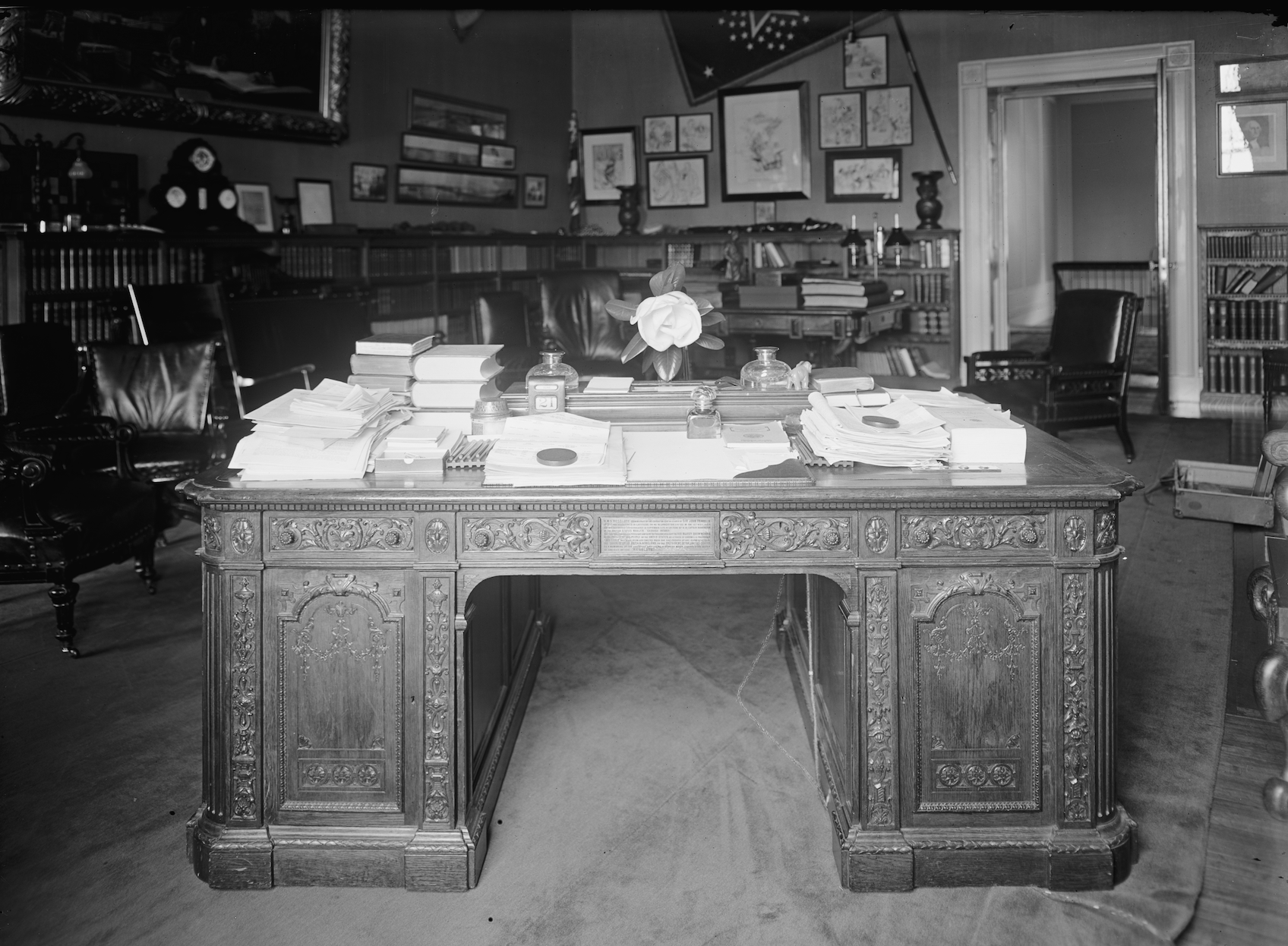By Walter W. Woodward
(c) Connecticut Explored Inc. Spring 2022
Subscribe/Buy the Issue!
How many know about Connecticut’s connection to the president’s desk in the Oval Office—and the preservation and craftsmanship stories it embodies?
The story begins when Captain James Buddington of Groton and a skeleton crew of 11 sailed into New London Harbor on Christmas Eve, 1855. The prize vessel the veteran whaler had discovered abandoned on an ice flow off Baffin Island three months before was none other than the battered Arctic rescue ship H.M.S.Resolute. Resolute had been sent by the British admiralty in 1852 to search for the missing explorer Sir John Franklin, whose entire expedition had disappeared while attempting to find the Northwest Passage linking the Atlantic and Pacific oceans in 1845.
The iron-prowed Resolute, specially fitted to withstand the crushing demands of Arctic conditions, had been the lead ship of a five-vessel rescue mission. While it had not found any sign of Franklin, the ship had rescued the crew of the ice-bound H.M.S. Investigator in April 1853. Unfortunately, four months later the Resolute too became locked into a moving ice flow through a brutal Arctic winter. Eight months later, the captain and crew reluctantly abandoned Resolute for a grueling over-ice march to safety, leaving the ship to drift.
Buddington and his crew found the ghost ship on September 10, 1855, 1,200 miles from where she had been abandoned. Buddington’s voyage in search of whales had so far had limited success. But by the laws of salvage, the Resolute was now his—if he could get it home. Resolute was designed for a crew of 75 men. Buddington’s crew numbered 26. Resolute was damaged, waterlogged, and in need of rigging and sails. The challenge was formidable.
The subsequent 67-day, tempest-tossed journey to New London was, according to Martin W. Sandler in Resolute (Sterling Publishing, 2006), the most difficult of Buddington’s long career. “I don’t know how I did it,” Buddington later recalled.
Resolute’s arrival in New London was a major event, as Sandler documents. The ghost ship provoked both local curiosity and international diplomacy. “She attracts visitors from everywhere,” The Boston Daily Advertiser observed. The British government immediately asserted ownership of the vessel. It dropped its claim, though, at the urging of Henry Grinnell, an American philanthropist who had personally funded two expeditions to find Franklin and who noted that Buddington had suffered great financial losses rescuing the vessel. Grinnell then asked the U.S. Congress to buy the Resolute from Buddington, restore it, and return it to Britain in recognition of its “humane and merciful object” of rescuing the Franklin expedition. Congress authorized the funding, and on December 12, 1856, the Resolute reached Portsmouth, England, where she was visited by Queen Victoria. The Resolute returned to service and sailed until 1879.
Upon its retirement, Queen Victoria ordered special desks be made from Resolute’s timbers, one of which was presented as a gift to the President of the United States. The elaborately carved desk arrived at the White House on November 23, 1880, where it was received by President Rutherford B. Hayes. The “Resolute desk” became a presidential work station and site of visitor interest because of its beautiful design and historical significance. It was moved into the Oval Office by John F. Kennedy in 1961 and has been used there by every president since except George H. W. Bush.
Walter W. Woodward is the Connecticut state historian. Listen to his podcasts at Gratingthenutmeg.libsyn.com and visit TodayinCTHistory.com.
GO TO THE NEXT STORY
GO BACK TO SPRING 2022 CONTENTS

